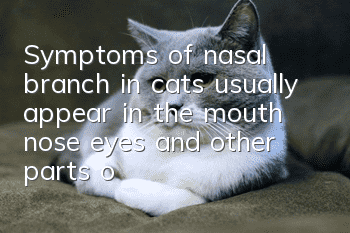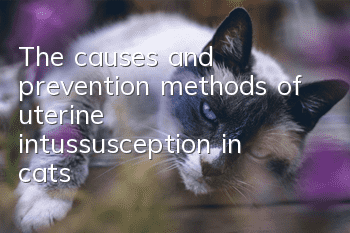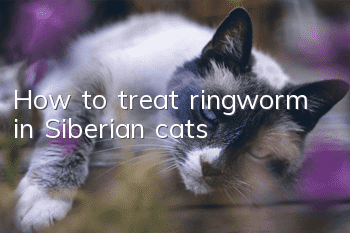Symptoms of nasal branch in cats usually appear in the mouth, nose, eyes and other parts of the body

If a cat gets sick and catches a cold, the owner will be very worried. When the symptoms become severe, it will transition to bronchitis, which is an infectious disease. When a cat is sick, you need to pay special attention. Once the cat’s symptoms are diagnosed, it is easier to prescribe the right medicine. So how do you know that some of the cat's behaviors indicate that it is sick and is suffering from feline rhinal disease? Let’s take a look at the symptoms of nasal branch in cats.
Symptoms of nasal congestion in cats
Feline viral rhinotracheitis is an infectious disease caused by feline herpes virus, which is what we often call feline nasal bronchitis. Cat rhinoplasty is a virus that infects the respiratory tract and digestive tract, so the symptoms of virus infection generally appear in the mouth, nose, eyes and other parts of the body.
In the early stage of rhinitis infection, the cat only sneezes, has a runny nose, tears, and has a loss of appetite, but does not have a fever. If the cat has a fever, it is in the late stage of rhinitis infection, and the tears and nasal mucus are purulent. Therefore, parents should take measures when the cat has symptoms such as sneezing and runny nose to prevent the cat's condition from getting worse.
The dangers of cat nasal branch
Parents all know that feline nasal congestion is very harmful. Feline nasal congestion is a highly contagious disease. According to surveys, 80% of cats in the world suffer from nasal congestion. Once a cat is infected, the incidence rate is 100% and the mortality rate is 50%. This shows how harmful this is.
Infected cats can infect other cats through secretions from the mouth, nose, eyes, etc., so parents should isolate the infected cat to prevent other cats from being infected. In the early stages of cat infection, parents should treat it as soon as possible to avoid serious illness and death of the cat.
Treatment and prevention of nasal branch
Although feline nasal branch is not a terminal disease, it still has a certain mortality rate. Early detection and early treatment are needed to control the further development of the disease. If the cat is not infected with nasal congestion, prevention work must also be done, because once the cat is infected with nasal congestion, it will carry it for life even after it is cured.
In the early stage of cat nasal congestion, you can take lysine and amoxicillin antibiotics to block the replication of the virus and prevent the growth of the virus. If the cat has a fever, it should be sent to the hospital for injection and treatment. Later, the cat will take Lysine for auxiliary treatment and prevention of virus invasion. According to experimental studies, taking Lysine can greatly reduce the chance of cats being infected with nasal congestion. Therefore, if the cat is not infected with nasal congestion, parents can give Lysine to cats regularly.
- A little belly? Sagging flesh? Is the cat obese?
- If your cat bites, be patient when correcting your pet!
- North American Shorthair Cat Appearance Characteristics_Habits_Raising Methods_Hair Care
- What to do if cats suffer from organophosphorus poisoning
- Can cats eat breakfast cake and cream?
- Can a three-week-old cat eat cat food?
- How to train a cat that is too naughty? How to train a cat to be obedient and well-behaved!
- How to treat diabetes in cats?
- What to do if the kitten is disobedient. Start training the cat to be obedient from an early age.
- What to do if a male cat in heat urinates everywhere



